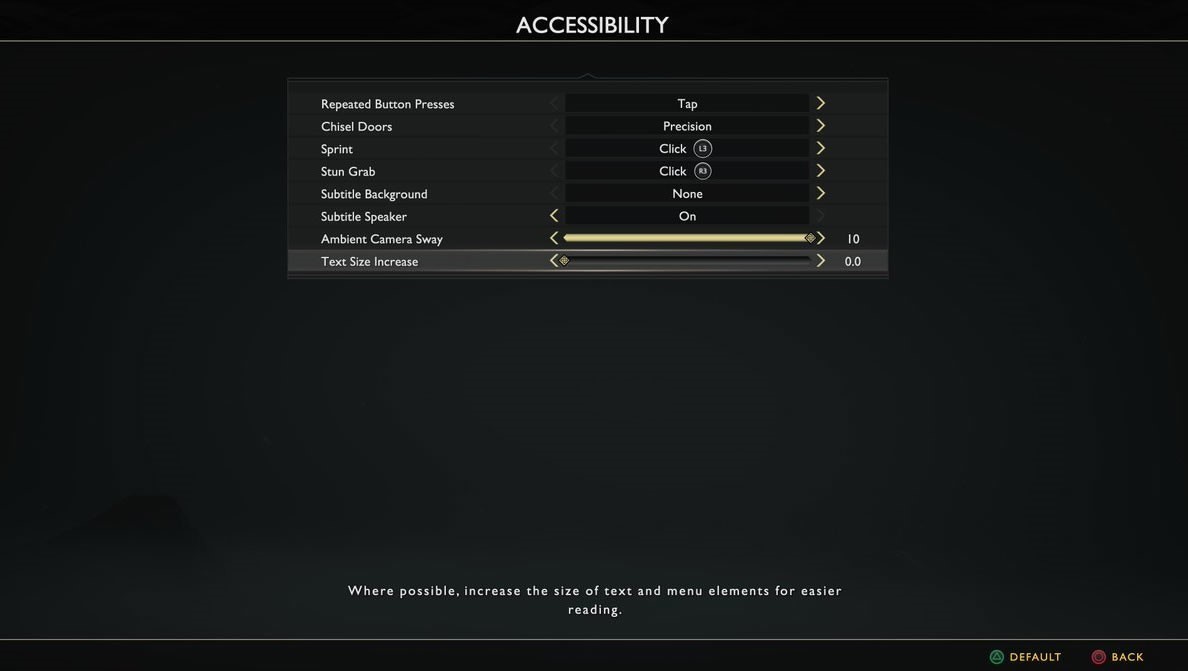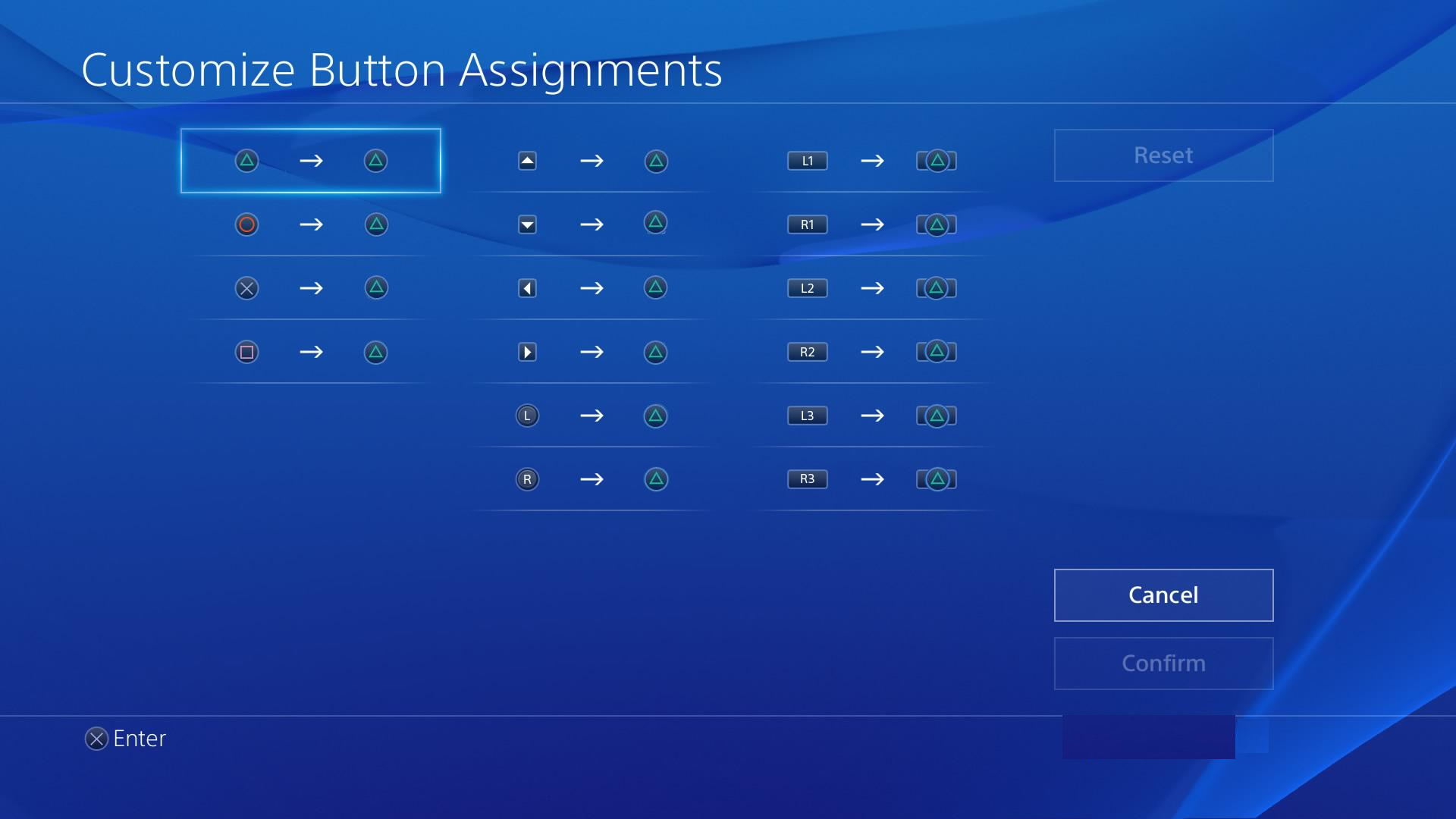Don't Disable Game Players, Enable Players to Interact Comfortably
Very often video games disable game players unintentionally by not considering accessibility options. This article explores this issue and suggests a more standardised approach to accessibility options in video games.

Too often designing content for those who require increased accessibility leads to rudimentary solutions. In the television industry, there are guidelines and quotas set out for accessible content[i]. This includes best practice regulation for a typeface to use for subtitles, details for audio description and so forth. In the UK, the BBC (via Ofcom) are required to subtitle 100% of their content; which seems an appropriate standard needed for TV and creative industries. Although, there are problems with Ofcom’s guidelines. Whilst setting quotas encourages broadcasters and production companies to include accessibility options; outside of subtitles the percentages of content stipulated for audio description is minuscule (10%) and with sign language(5%) even lower. It is a step in the right direction, however (broadcasters should and do at times go above these stipulated figures), and something which games publishers and console manufacturers should consider. It is the job of creators and distributors of (multi)media content to ensure that the users who interact with their content are catered to. It is about not disabling people with medical conditions but instead enabling them to carry out interaction in a way which seeks to not obfuscate comfort.
The ‘resistance’ to accessibility testing and design is often about the notion that it somehow requires too many additional steps, the team doesn't have the knowledge required about designing accessible content or the potential audience is small. However, per the Department for Work and Pensions(UK)[ii] “one in five people reported a disability” that is 13.9 million people which is a sufficiently large audience; an increase of 19% from the same report in 2013/14 (11.9m). Based on this data there is certainly a demand for content in the digital games industry to be more accessible. The basic sequence of interaction with content usually looks like this:
Begin > Stimuli Received > Response Determined > Input Provided > Repeat (until 'failure state' or finished)
This interaction model to many would look simple enough to understand, but it is incorrect to assume the software or hardware a person interacts with will always allow them to complete this process. Those users who have medical conditions could face issues at any stage of this process if the content does not allow for appropriate accessibility options (and for all users usability will affect this process). Consider an assumption is made that a sound will be able to convey the appropriate information at the 'stimuli received' stage, what if the user is hard-of-hearing or deaf? all of the information will be missed and the process halted early on. Additionally, what if the response and input are assumed? the user could have a motor impairment and not be able to interact with the content comfortably or at all. Whenever content is being designed, researched or tested, it is essential this basic interaction model is considered with regards to usability and accessibility, one (accessibility) directly influences the other (usability).
Text Size, Captioning and Subtitles
One area which should be standardised between titles is the implementation of appropriate text size. Too often the in-game text or subtitles are not suitable and fail to consider both how far users may be from their television (or other equipment) and those who have partial blindness or limited sight. Friend via Games UR conference 2015[iii] suggests the minimum pixel size of text for normal text should be 32px and subtitles at 46px. It is important that the content starts with these values by default, and that whenever possible there are parameters to make text bigger or smaller. Ideally, as with all options pertaining to customisation, these should be presented to the player upon their initial interaction with the content. Correct use of subtitling and captioning standards for deaf and the hard of hearing should be met[iv]. Indeed, one web article[v] asserts that many games got subtitling wrong in 2017, this includes the following:
1. Tiny font size
2. Long lines
3. Too much text
4. Poor Contrast
5. Line Breaks
6. No information for hard of hearing (maybe a toggle for those who don’t want these details)
These are just a few of the issues cited in the article and it is of the utmost importance that these are caught in the process of development; especially during user testing. Ensure users who are hard-of-hearing, deaf, short-sighted and long-sighted are recruited at some point in the process whenever possible. This increases the chance of information provided through captioning or subtitles being suitable. As shown in figure 1 when standards are not met it can be difficult to read subtitles, which can lead to frustration for some and outright cause important information to be missed by the deaf and hard-of-hearing.[vi]
Fig 1: A particularly troubling subtitle size in Deus Ex: Mankind Divided
In a specific case, a gamer (Steve Saylor) with nystagmus[vii] praises Nintendo Switch game 1-2 Switch “The text was really big on screen. I can sort of stand back and read it without any problems. And for them to describe things in audio on how to play certain games is really great.”[viii] While not all games can necessarily make the same accordance due to their different gameplay styles, this does provide an example of a case where text, haptic feedback and auditory information work in tandem to provide relevant information through more than a single stimulus.
In another discussion at Games UR conference, Lorusso[ix] emphasises the need for options which might allow for a change of frequency for headsets and headphones where those with cochlear implants might face either painful loud noises or soft dialogue; options for these are available through some Bluetooth implants where this can be altered on a hardware level, but software must consider in-game implementation as well. Additionally, the use of footstep sounds within digital games content to convey important information can be detrimental to players and where possible (with anything audio) there should be a non-audio cue alternative.
Fig 2: Text in 1-2 Switch
Motor Impairment and Content Interaction
Another aspect which is important to consider is a section of gamers with medical conditions (namely muscle diseases) which make it potentially uncomfortable, painful or impossible to interact with content. Wasterfors and Hansson state “The gamers typically solve this by asking a person, friend or parent to play during the short-moment” [regarding repeated controller presses].[x] There are multiple instances in games where repeated button presses are necessary, especially in action games. In digital content such as Uncharted 4 or God of War (see figure 3) there are clear accessibility menus which have options to hold a button instead of repeatedly tap in certain situations. It is important that in any game which has segments with especially intensive repeated button presses there are other options, and where possible failure states should be avoided in repeated button press scenarios. An Xbox update from 2017 allows for the use of a co-pilot feature which allows two controllers to act as if they are a single controller, also allowing for unique configurations such as with hands apart, hand and chin, foot etc.[xi] In the instances where players have another person assisting with certain tasks such as repeated button presses this is a step forward from the typical process.
Fig 3; Accessibility Options in God of War
Additionally, the ability to map buttons and controls at an OS level (after respective updates) of the Xbox One[xii] and PlayStation 4[xiii] consoles means that those players who have issues using or reaching certain buttons are able to reach them, which should be utilised going forward on every gaming system. It is an aspect that perhaps Nintendo will allow with future firmware updates of the Switch. Of course, PC has key bindings as well and supports a range of different peripherals, more variety is always beneficial to both those with medical conditions and without.
Final Discussion
Thus far, this article has provided examples of some of the ways in which rather than disabling players and stopping them from interacting with games content there are multiple methods to enable a better experience. While this article does not provide an exhaustive list (see the fantastic work at game accessibility guidelines[xiv]) it does reaffirm that there are ways in which to meet the standards of players who have medical conditions or impairments. There is a direct correlation between accessible content and good usability.
Fig 4: The ability to remap buttons is essential going forward (Screenshot from PlayStation 4 Console)
Whilst some usability testers (or those responsible for accessibility) might find that there is difficulty in recruiting participants for accessibility testing (especially those with specialist setups) it is important that as many play styles and interactions with the game can be understood as possible. Use of diary studies (video, written, audio), residence 1-2-1 and so forth can be involved in the process to gain more knowledge about the set-up and interactions required from a wider range of the spectrum.
It is the belief of this article that similar to the use of a regulatory body in the television industry (OFCOM, in this case) the games industry needs to embed accessibility culture into digital games content. Whether this is through an independent body or through manufacturers, publishers and distributors there must be a bigger push for a standardised level of accessible content. One positive step towards this could be the introduction of symbols on game cases and digital storefronts to specify accessibility options available for the content, similar to the information required by law with regards to age rating.
Wrap-Up and Resources
To conclude this article there is a range of resources available to improve understanding of accessibility and games. This includes Scope[xv], Game Analytics[xvi], Gamasutra[xvii], IGDA game accessibility special interest group[xviii] and guidelines and actionable accessibility websites including the earlier mentioned ‘game accessibility guidelines’ page and Includification[xix]. The work of specialist organisations such as AbleGamers[xx] and SpecialEffect[xxi] should be considered. Finally, getting the views and usability testing with those with medical conditions is extremely important. One website which also provides a reference point for what worked in previously released games is OneOddGamerGirl which provides reviews that assess captioning, visual cues, haptic feedback and so forth. It is important to broaden the scope and communication with the varied range of users who could potentially interact with content and with the utilisation of these tools and a view to improving usability through accessible options is fundamental; it is about enabling players to interact and enjoy games content and to avoid inadvertently disabling players.
Referenced in Article:
[i] Ofcom. (2017). Ofcom’s Code on Television Access Services. Retrieved from: https://www.ofcom.org.uk/__data/assets/pdf_file/0020/97040/Access-service-code-Jan-2017.pdf
[ii] Department for Work and Pensions (2017). Family Resources Survey 2016/17.
[iii] Friend, M., Hamilton, I. [GUR SIG]. (2015, July 28). How Sony is approaching accessibility for disabled gamers – Sony (SCEE) - #Games UR Conference 2015. Retrieved from: https://www.youtube.com/watch?v=tiZZj8cS4AE
[iv] BBC. (2017). BBC Subtitle Guidelines. Retrieved from: http://bbc.github.io/subtitle-guidelines/
[v] Deryagin, M.(n.d.). What Video Game Subtitling Got Wrong in 2017. Retrieved from: https://www.md-subs.com/what-game-subs-got-wrong-in-2017
[vi] AudioDef. (2017). Deus Ex: Mankind Divided: Subtitles. Retrieved from: http://audiodef.com/blog/?p=54
[vii] American Optometric Associations. (n.d.). Nystagmus. Retrieved from: https://www.aoa.org/patients-and-public/eye-and-vision-problems/glossary-of-eye-and-vision-conditions/nystagmus
[viii] Cloutier, D. (2017). How a blind man plays mainstream video games and the future of accessibility in games. CBC News.
[ix] Lorusso, T. [GUR SIG]. (2016, 15 November). Designing for gamers with deafness – Tom Lorusso, Microsoft - #GamesUR London 2016. Retrieved from: https://www.youtube.com/watch?v=w0_3G-YSWRo
[x] Wasterfors, D., Hansson, K. (2017). Taking ownership of gaming & disability. Journal of Youth Studies 20(9), 1143 – 1160.
[xi] Henson, S. (2017). First Wave of New Xbox Update Features Ship to Select Xbox Insiders Today. Retrieved from: https://news.xbox.com/en-us/2017/01/23/xbox-creators-update-preview/
[xii] McCormick, R. (2015). Xbox One update adds controller remapping for all games. Retrieved from: https://www.theverge.com/2015/11/16/9747970/xbox-one-controller-button-remapping-update
[xiii] Kuchera, B. (2015). Sony’s PlayStation 4 made gaming better for millions of people with one simple menu. Retrieved from: https://www.polygon.com/2015/3/26/8295511/playstation-4-update-button-mapping
[xiv] Game Accessibility Guidelines. http://gameaccessibilityguidelines.com/
[xv] Ellis, B. (2016). Accessible Gaming Q & A. Retrieved from: https://community.scope.org.uk/discussion/30498/accessible-gaming-q-a
[xvi] Lovato, N. (2015). How to expand your audience with Game Accessibility. Retrieved from: https://gameanalytics.com/blog/how-to-expand-your-audience-with-game-accessibility.html
[xvii] Hamilton, I. (2015). How to do subtitles well – basics and good practices. Retrieved from: http://www.gamasutra.com/blogs/IanHamilton/20150715/248571/How_to_do_subtitles_well__basics_and_good_practices.php
[xviii] IGDA-GASIG. https://igda-gasig.org/
[xix] Includification. https://www.includification.com/
[xx] AbleGamers. http://www.ablegamers.org/
[xxi] SpecialEffect. https://www.specialeffect.org.uk/
*Article originally posted on LinkedIn
About the Author(s)
You May Also Like











.jpeg?width=700&auto=webp&quality=80&disable=upscale)








